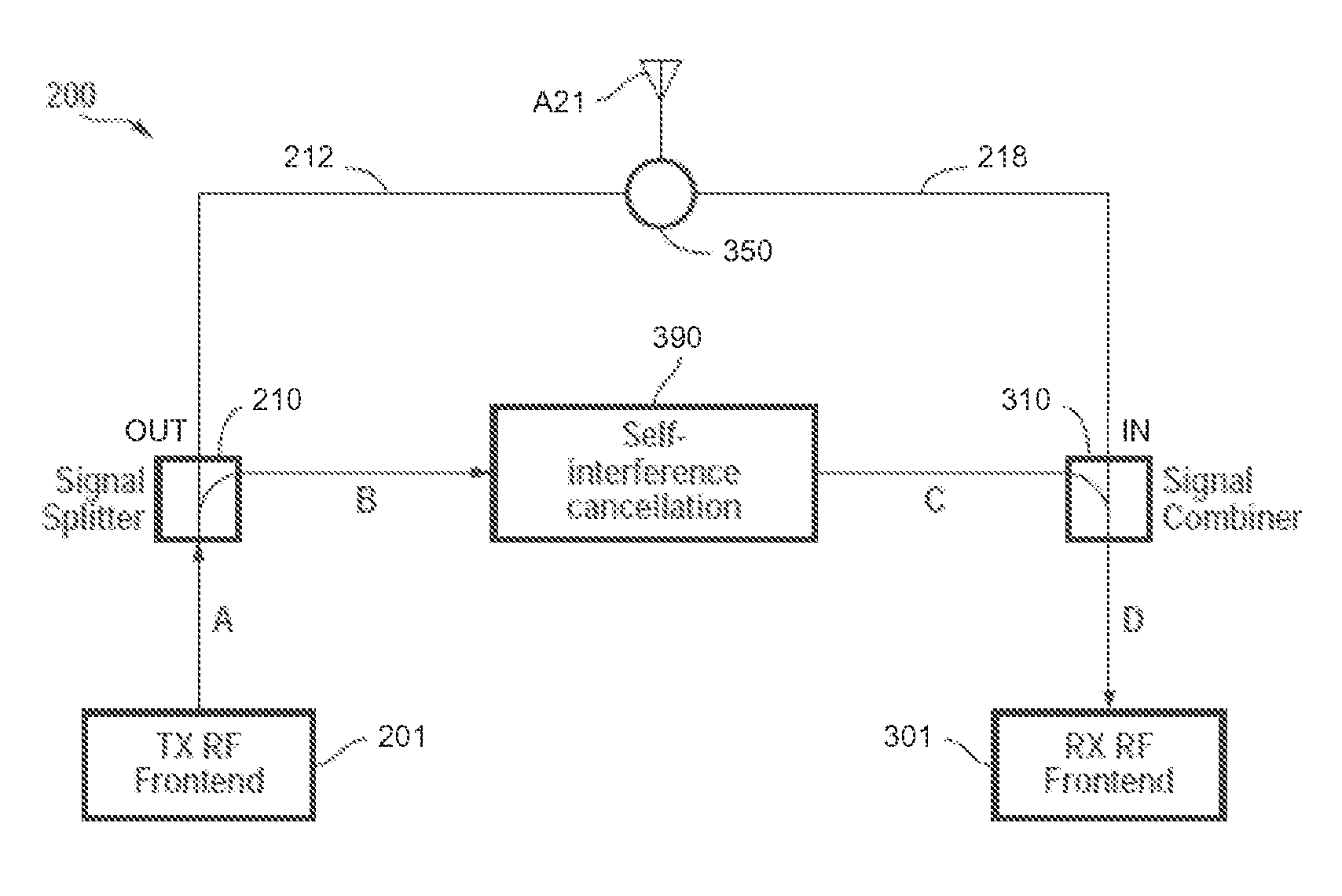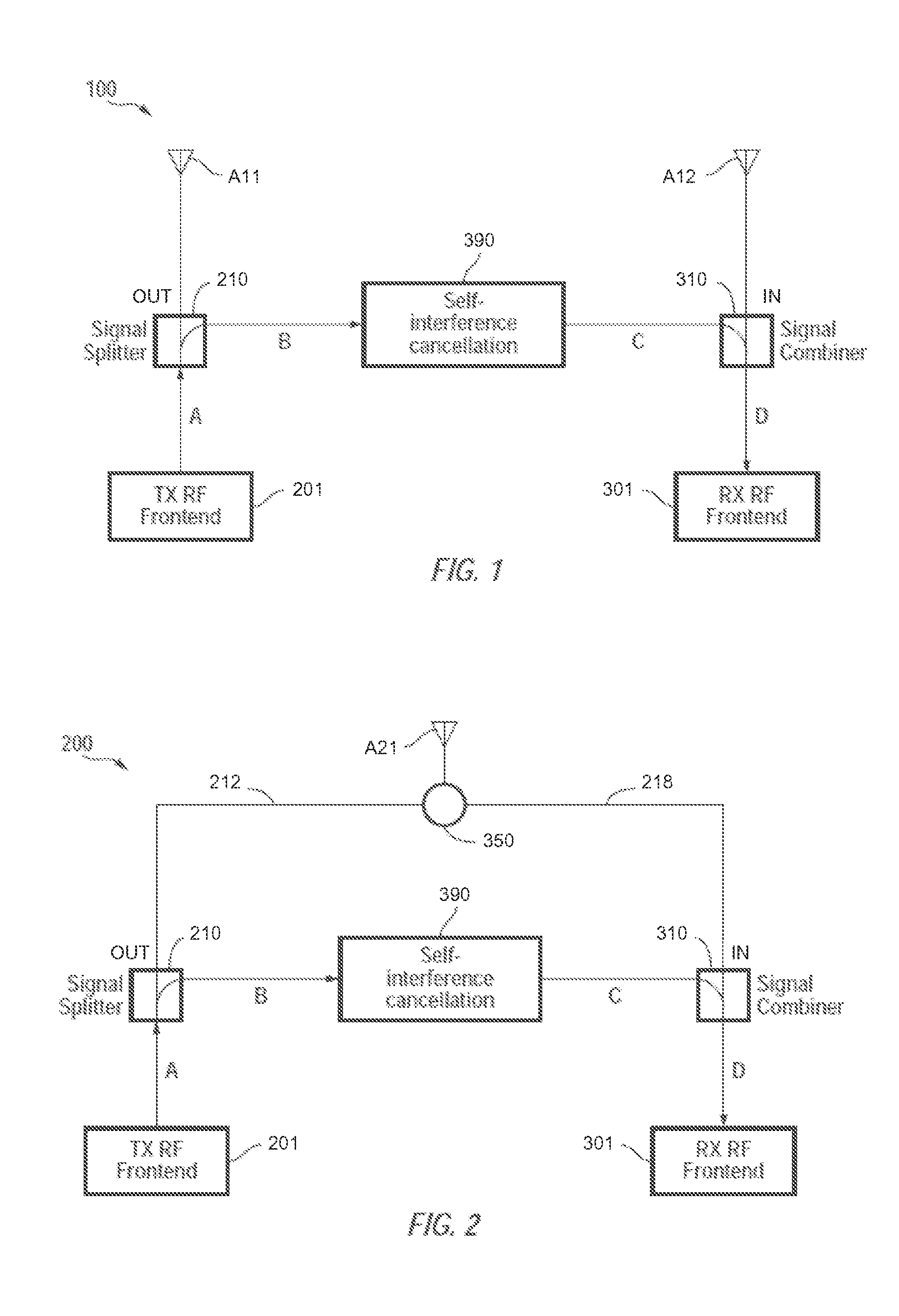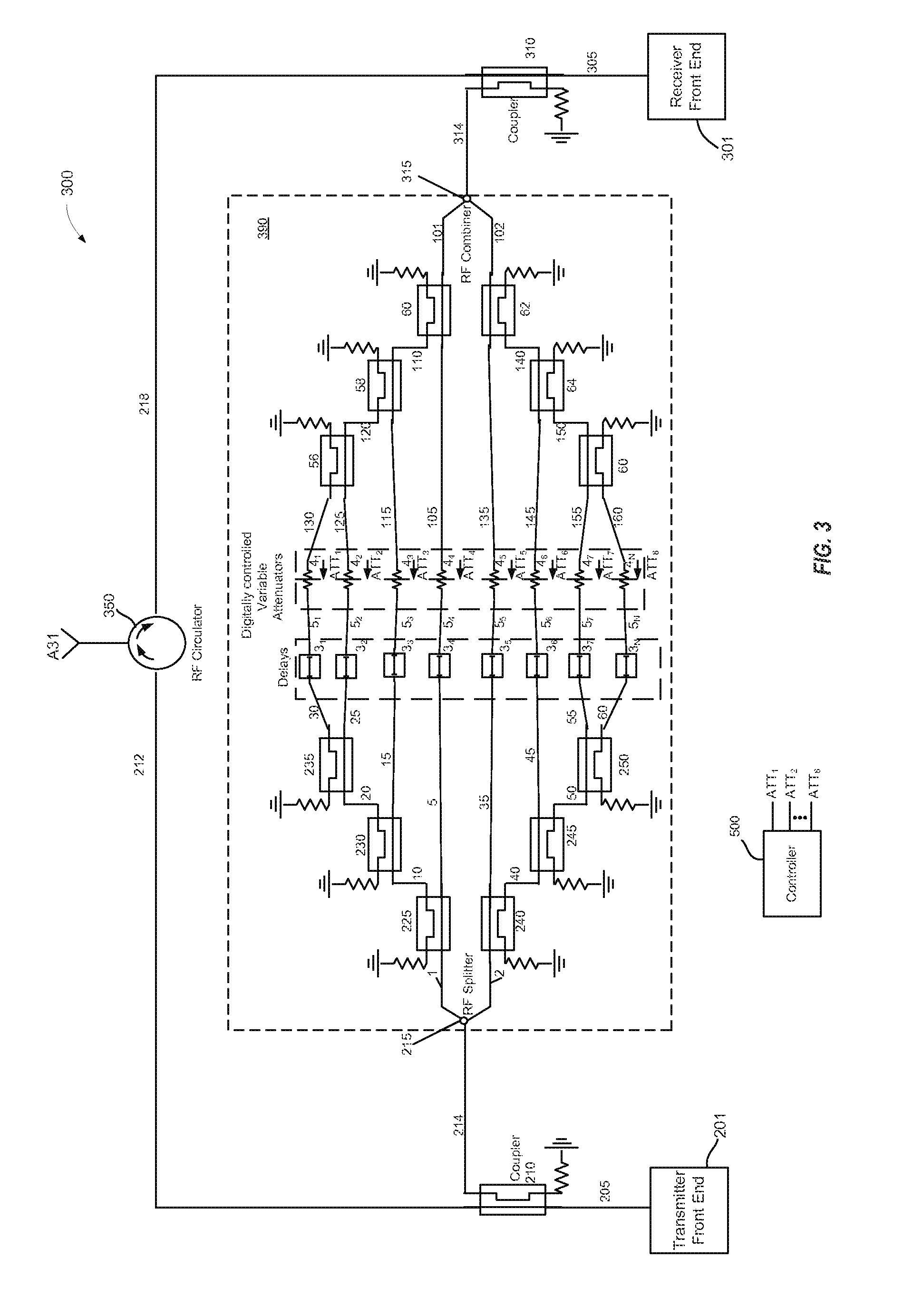Tuning algorithm for multi-tap signal cancellation circuit
a signal cancellation and tuning algorithm technology, applied in the field of full-duplex wireless communication system, can solve problems such as system ineffective reception of desired signals
- Summary
- Abstract
- Description
- Claims
- Application Information
AI Technical Summary
Benefits of technology
Problems solved by technology
Method used
Image
Examples
Embodiment Construction
[0021]Embodiments of the present invention will be described more fully hereinafter with reference to the accompanying drawings. This invention may, however, be embodied in many different forms and should not be construed as limited to the embodiments set forth herein. Like numbers refer to like elements throughout.
[0022]It is understood that the term “vector” is a synonym for signal. The terms “complex vector” and “real vector” are synonyms for complex signal and real signal, respectively. A vector can be an analog signal including an analog component I(f), Q(f), or a digital signal including a digital component I(n), Q(n). A complex vector include a complex-valued signal I+jQ. A column vector is an m×1 matrix, i.e., a matrix consisting of a single column of m elements. A m×n matrix is a matrix consisting of m rows and n columns.
[0023]FIG. 1 is a simplified block diagram of a full-duplex wireless communication device 100, in accordance with one embodiment of the present invention. ...
PUM
 Login to View More
Login to View More Abstract
Description
Claims
Application Information
 Login to View More
Login to View More - R&D
- Intellectual Property
- Life Sciences
- Materials
- Tech Scout
- Unparalleled Data Quality
- Higher Quality Content
- 60% Fewer Hallucinations
Browse by: Latest US Patents, China's latest patents, Technical Efficacy Thesaurus, Application Domain, Technology Topic, Popular Technical Reports.
© 2025 PatSnap. All rights reserved.Legal|Privacy policy|Modern Slavery Act Transparency Statement|Sitemap|About US| Contact US: help@patsnap.com



